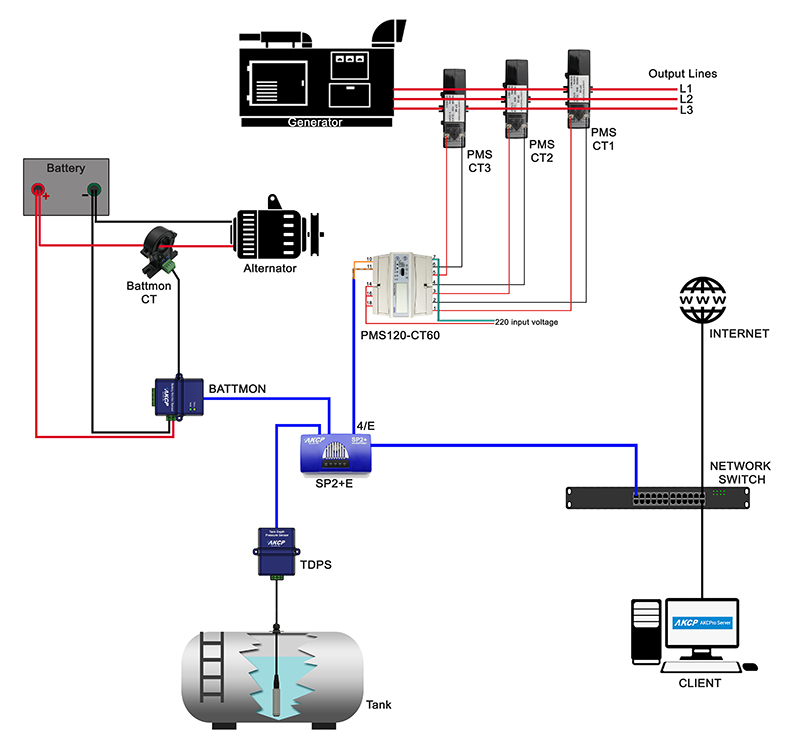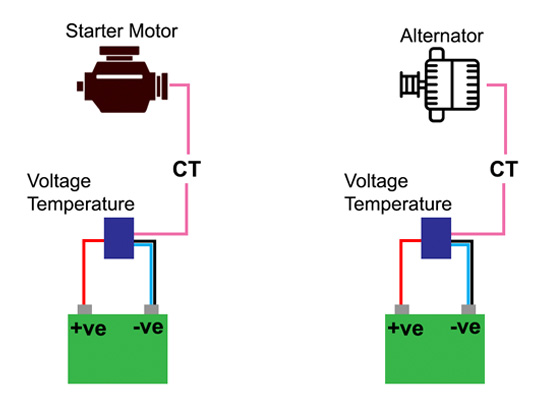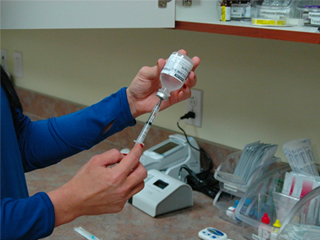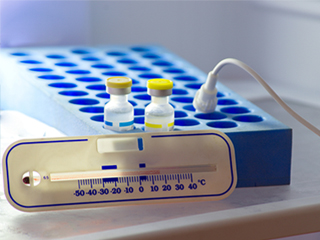Generator Maintenance Monitoring
Types of generators and maintenance requirements

There are two categories of generator power installations. Emergency Power Supply Systems (EPPS) are an independent power supply system for life-critical infrastructure. For example, hospitals are legally required to have EPPS. The maintenance of such systems is tightly controlled and regulated.
The second category is standby generators. These allow the continued function of the facilities during power outages. Typically they are found in office buildings, hotels and factories.
Both types of generators can benefit from a preventative maintenance program. The maintenance required differs for different models and manufacturers. The maintenance program will be usually broken down into daily checks, weekly and monthly maintenance. Certain events should take place after a specified number of runtime hours.
It is recommended that as a minimum there are two major maintenance events each year. More frequent maintenance is required for EPPS and heavily used standby systems. The preventive maintenance events should include :-
- Load test of the generator
- Multipoint inspection based on the engine manufacturers recommendation
- Fuel tank cleaning and maintenance
- Fluid level checking, top off and changes
Download a free generator monitoring maintenance checklist here
Why do you need generator maintenance monitoring?
Although modern generators are very reliable, there are still instances of Genset failure to start situations. Older gensets are more prone to this, even when well maintained. It is estimated that around 10% of installed commercial standby generators are unable to start and carry the load required when called upon. By having a proper generator maintenance program, and monitoring of the generators essential parameters, instances of generator failure to start can be reduced.
Typical causes of failure to start are :-
- Low battery voltage
- Low fuel level
- Low coolant temperature
- Unhandled system alarms
Even if you have an excellent generator maintenance program in place, once the generator is closed and the technician is offsite, the condition is unknown. Through the installation of a generator maintenance monitoring system, you can receive alerts and remotely monitor the generator condition. Your key employees, generator technicians and maintenance staff can login and check the status anytime 24/7 365 days a year.

AKCPro Server Generator Monitoring Dashboard
Benefits of a remote generator maintenance monitoring system
It’s like having a technician on-site all the time. The monitoring system can do the equivalent of 31,536,000 inspections a year. That is once a minute for 365 days.

- Help meet regulatory requirements for generator maintenance schedules, monitoring and audited paper trail of generator performance.
- Monitoring for multiple generators from a central location. Municipal offices and so on will all have backup power generators. Monitor your complete network of sites from a single user interface.
- Inform technicians ahead of time what to expect the problem may be when visiting a site. Save on multiple roundtrip site visits by having the correct parts or tools on board before dispatch.
- Geolocation of generators. If you are in the business of generator rentals, the monitoring system can not only check the maintenance and usage of the generator but also it’s location. Some generator monitoring solutions include a GPS antenna for geo-locating generators.
- Prevent overheating of the generator when running for long periods. Monitoring the generators coolant levels and temperatures with alerts via e-mail or SMS messaging when critical levels are approached. React to emergency situations, shut down the generator remotely to prevent escalation and costly repairs.
- Fuel theft prevention. Check your fuel usage, monitor fuel tank levels and spot trends. For example, is fuel level decreasing when the generator is not switched on, or used for short periods with high fuel consumption? This can be an indicator of fuel theft, which can cost companies thousands.
Generator maintenance monitoring systems
There are different levels of monitoring and options available, depending on your specific site, generator, control panel and requirements.

Modbus Connection – Modbus monitoring for generators
Many popular control panels on commercial sized generators feature a Modbus RS485 or TCP/IP connection. Network-enabled monitoring devices with Modbus capabilities can be programmed to connect with the generator and read many parameters and generator stats. Typically engine speed, oil pressures and temperature, coolant levels, fuel flow, runtime and so on can all be monitored over the Modbus connection.
Fuel Level Monitoring
Sometimes, even if monitoring over Modbus, there may be a requirement for additional fuel level sensors to be installed. Generators usually have an internal fuel tank, but this can be small for prolonged operations. Standby fuel tanks can feed these smaller internal tanks. Fuel level sensors placed on these tanks will produce a graph of fuel level and use over time. There are different technologies used for fuel level sensors such as float type, ultrasonic and depth pressure sensors.
Generator Battery Monitoring
A bad generator battery will result in a failure to start condition. Monitoring the voltage and temperature of the battery as well as power output when cranking will give an indication of the batteries health. When you start to see a drop in voltage, increased power consumption during cranking to compensate, you know the battery needs service or replacement.

The current transformer can be placed between the battery and the engine alternator, or the battery and the starter motor. When between the battery and alternator the charging current during engine operation can be monitored.
Power Monitoring and Runtime
Power meters, or Modbus connection, can be used to check the runtime hours and operational loads of the generator. Check you aren’t running close to maximum generator capacity, and check runtime hours to know when to schedule maintenance events.
Generator Alarms
Most generators have digital dry contact alarm outputs. Sometimes these are fixed, or they are programmable through the generator control panel. Alarms for engine over-speed, low fuel, low oil pressure etc. Monitoring devices with dry contact inputs can take in these alarms and alert. Responding to these alarms can be critical to ensure the generator does not suffer further damage. Often alarms can prevent the engine to start at all, so responding to and clearing the alarms is crucial.
Generator Maintenance Monitoring System communications
Many generators are installed at remote sites, or in difficult to reach locations, basements and so on. You must consider the site and the services available when selecting your monitoring system.
Cellular Network Communications
4G / LTE connections are one of the most common to be used for generator monitoring systems. The cellular data modem installed in the monitoring device provides a data link for remote monitoring and sending e-mail or SMS alerts, reports, graphs etc. An advantage of this communications is that you can pretty much put the generator anywhere that has a cellphone signal and begin monitoring. The drawback, however, is that you need a cellular network SIM card and data plan that means recurring monthly expenses.
WiFi or Ethernet Connection
If the location of your generator is within range of your building WiFi network, selecting a monitoring device with WiFi built-in could be an option for you. Sensor data is collected and then sent over the WiFi network for monitoring on your LAN or over the internet.
Where practicable, Ethernet can be used. Running CAT5 cable to some generators may be difficult, but for those nearby the buildings wired ethernet network, connecting to this is a simple and reliable option.
Radio Communication Technologies – LoRa and AKCP Wireless Tunnel
LoRa is a long-range radio network protocol that provides excellent penetration within buildings. The installation of a Modbus – LoRa sensors or other LoRa wireless sensors can be considered. These communicate the data back to a LoRa gateway within range which is connected to the internet by either Cellular Data, Ethernet or WiFi.
LoRa can communicate several kilometers in outdoor open environments, so it is also ideal for getting data from generators in remote sites, pumping stations, or collecting data from multiple generators in a given radius of the gateway.
AKCP has developed standard LoRa, layering on top our own Wireless Tunnel™ protocol. This improves the reliability of the delivery of messages, extended battery life and instant alerts when thresholds are exceeded.
Read about AKCP Wireless Generator Monitoring
AKCP Generator Maintenance Monitoring Solution
AKCP provides a complete range of tools for generator maintenance monitoring.
3 sensor port device, with Modbus RS485. Connect to your generators Modus panel, with the option to add sensors such as fuel level sensor, dry contact inputs, battery monitoring sensor. Ethernet communication comes as standard. Optional cellular modem provides remote communication and alerting through the 4G network.
Suitable for tanks up to 20 meters in depth. Tank depth pressure sensors will measure the pressure exerted by the column of fuel above. By entering the tank dimensions the volume is calculated. Fuel tank volume can be displayed and graphed. Tank level pressure sensors are available in wired and LoRa Wireless Tunnel™ radio.
Monitoring of battery terminal temperature, current and voltage. Ensure your battery is healthy and has sufficient voltage to start the generator when needed.
Take in alarms from generator control panels. LoRa Wireless Tunnel™ radio with 5 dry contact inputs available.
1ph and 3ph power meters with current transformers. Check generator power output, frequency and voltage.




